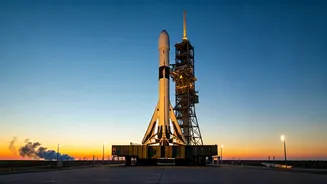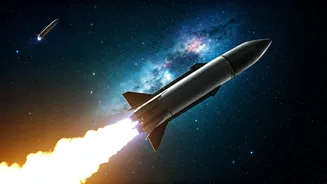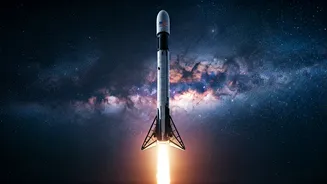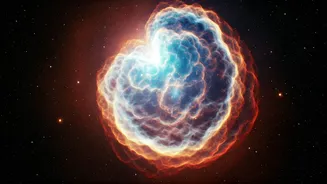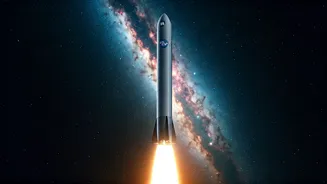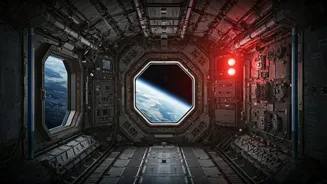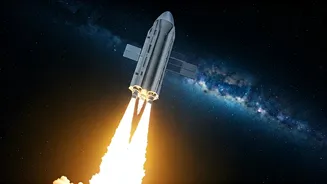Rocket Design and Function
The Falcon 9, designed and built by SpaceX, is a two-stage rocket. The first stage, powered by nine Merlin engines, provides the main thrust for liftoff
and the initial ascent. These engines run on liquid oxygen and rocket-grade kerosene (RP-1) propellants. After the first stage completes its burn and separates, the second stage, equipped with a single Merlin engine modified for the vacuum of space, takes over. This stage continues to propel the payload towards its destination, be it low Earth orbit, the International Space Station, or even beyond. The rocket's structure is predominantly made from lightweight alloys, designed to withstand the immense stresses of launch and reentry. A key feature of the Falcon 9 is its reusable first stage, which lands either on a drone ship in the ocean or back on land, allowing it to be used again, dramatically cutting down the cost of space travel. The rocket can carry heavy payloads, as it is capable of lifting over 22,800 kilograms (50,265 lb) to low Earth orbit and about 8,300 kg (18,300 lb) to geostationary transfer orbit.
Reusable First Stage
One of the most revolutionary aspects of the Falcon 9 is its reusable first stage. SpaceX has pioneered the technology of landing rockets, something previously considered impossible. The first stage is designed to return to Earth after separating from the second stage. This is achieved through a combination of precision maneuvers, engine burns, and control systems. After separation, the first stage performs a series of 'entry burns' to slow its descent and protect it from the heat of atmospheric re-entry. It then performs a 'landing burn' just before touchdown, either on a drone ship in the ocean or at a designated landing site on land. This reusability significantly reduces the cost per launch. The first stage is thoroughly inspected, refurbished, and then used again, sometimes multiple times. The ability to reuse this major component has drastically reduced the costs associated with space launches, making them more frequent and accessible for a range of missions, including commercial and scientific endeavors.
Mission Capabilities Overview
The Falcon 9 rocket is versatile and supports a wide variety of missions. It's particularly well-suited for launching satellites into low Earth orbit (LEO), which is crucial for various applications such as Earth observation, telecommunications, and scientific research. It is also used to send cargo and astronauts to the International Space Station (ISS) under contract with NASA, making the ISS a hub for conducting experiments in space. Falcon 9 can also be utilized for missions to geostationary transfer orbit (GTO), where it deploys satellites that will later reach geostationary orbit, appearing to stay in one place over Earth. The Falcon 9 has also been used for deep space missions, sending payloads beyond Earth orbit, thereby expanding our understanding of the solar system and beyond. Its reliability and payload capacity have made it a preferred choice for both government and commercial space missions, facilitating various scientific studies and technological advancements.
Impact and Future Outlook
The Falcon 9 has had a huge impact on the space industry. Its reusability has driven down launch costs, making space more accessible to a wider range of customers. It has also helped accelerate innovation, prompting other companies to develop reusable launch systems. The Falcon 9 has supported countless scientific discoveries, deploying satellites and probes that gather critical data about our planet and the universe. Looking ahead, SpaceX continues to upgrade the Falcon 9, focusing on increased payload capacity, improved reusability, and enhanced reliability. These advancements will further reduce launch costs and enable even more ambitious space missions. The rocket will continue to play a pivotal role in space exploration, opening up new possibilities for scientific research, commercial activities, and human spaceflight. Falcon 9 is seen as a key component of future missions to the Moon and Mars.
